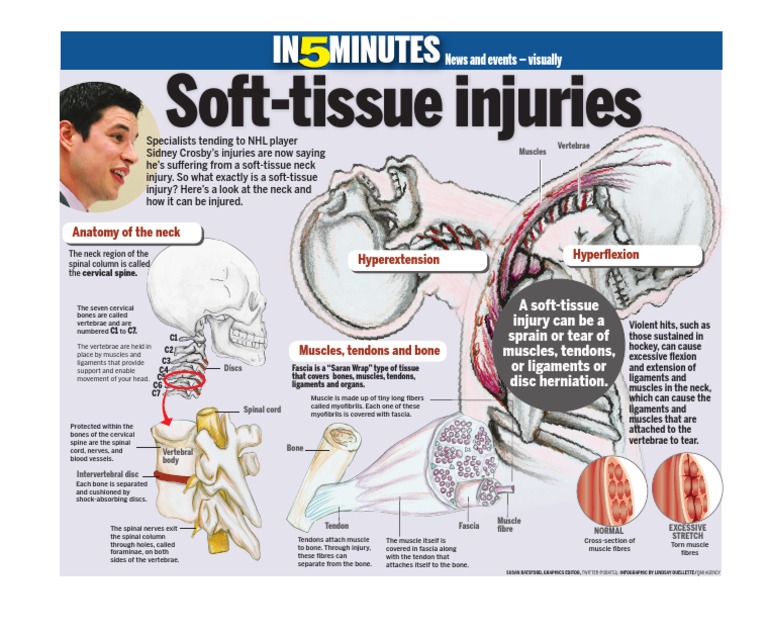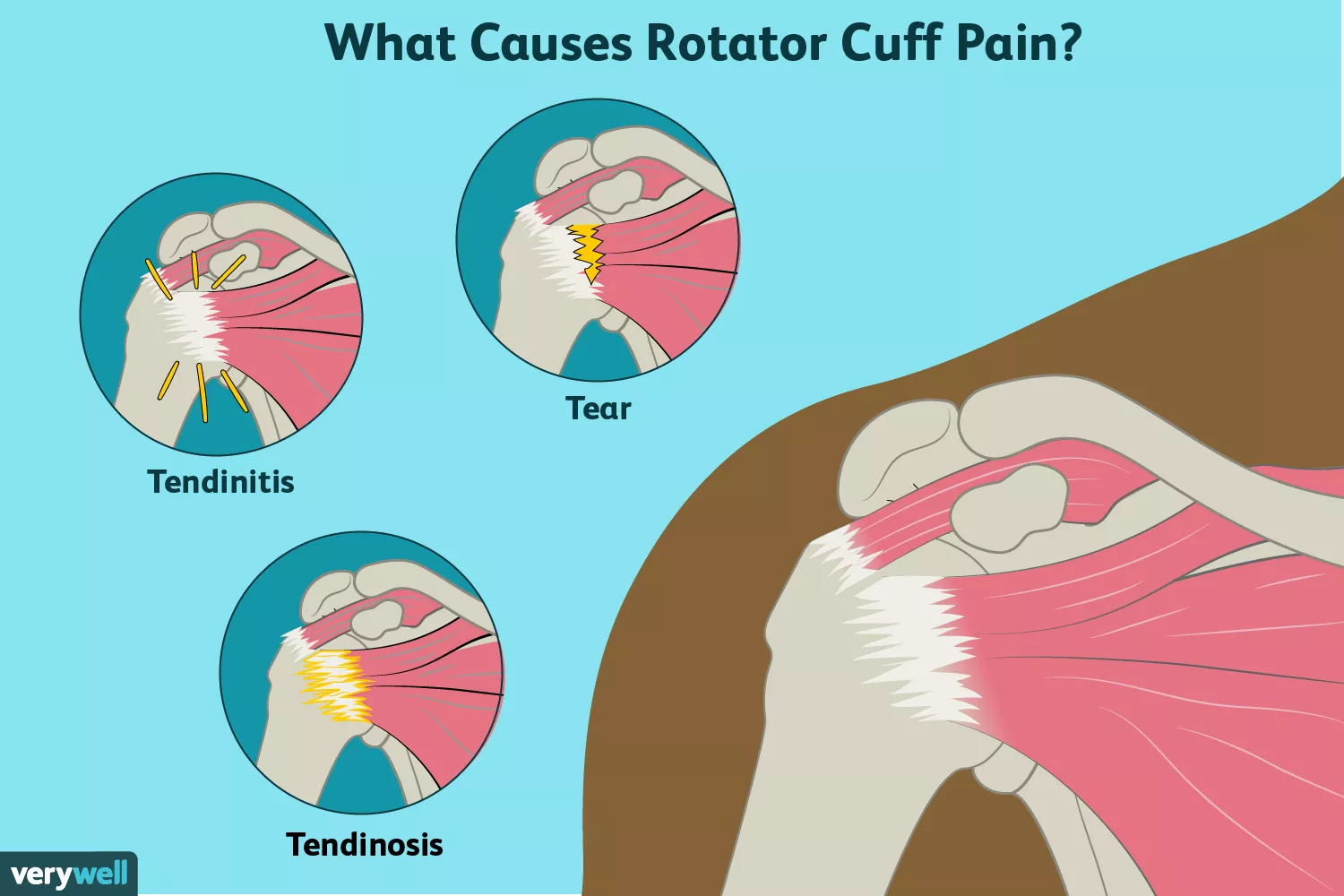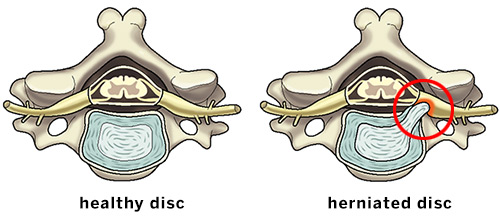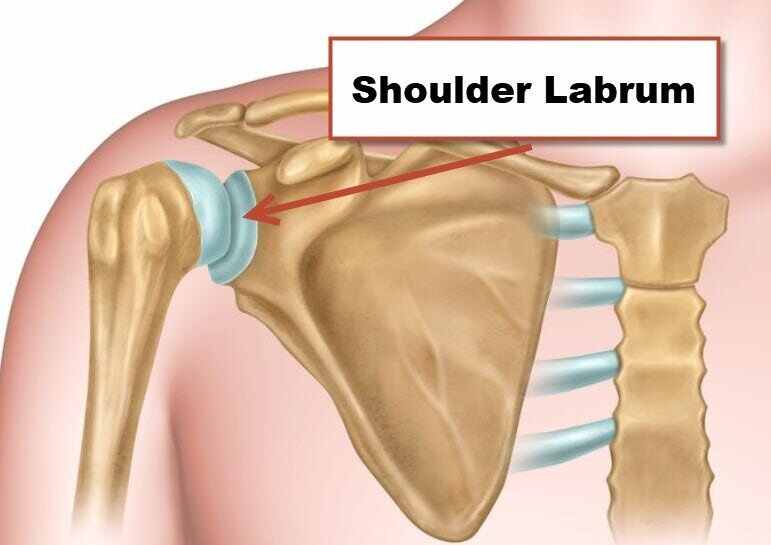Car Accident Injuries: Neck and Shoulder Pain
The neck and shoulders are often some of the most vulnerable parts of the body during a car accident. When a collision occurs, extreme forces act upon the body as it continues to try and travel at the speed you were going while being held in place by your seatbelt. While your seatbelt helps keep your torso in place, your head can be whipped around, straining, and injuring the neck and shoulders.
Under these circumstances, serious injuries can occur to the muscles, tendons, ligaments, joints, and nerves in the neck and shoulders. These injuries can sometimes be worsened when the driver anticipates the crash coming, causing the muscles in the neck and shoulders to tighten instead of being relaxed. This often leads to serious neck and shoulder pain that may require treatment.
Signs and Symptoms of Neck and Shoulder Pain
It may seem surprising, but getting into a crash when the vehicle is moving at a slow speed can result in a huge amount of trauma to the human body. When the neck gets thrown back and forth during a sudden stop, the neck ligaments will stretch in an unnatural way. Believe it or not, the blood vessels and the nerves will stretch along with the ligaments. This is how the victim’s neck experiences hyperflexion and hyperextension and develops varying degrees of pain.
Many people who are involved in a collision or other type of accident may not even be aware that they have suffered an injury until hours or days later. Adrenalin sent coursing through the body during an accident combined with shock may prevent you from noticing the signs and symptoms of a neck or shoulder injury.

This is why it is always important to seek medical treatment after an accident, as a doctor or chiropractor may be able to identify an injury you were unaware of and begin treatment before it worsens. Some signs and symptoms that you may have suffered a neck or shoulder injury and see a car accident doctor immediately include:
- Pain and stiffness in the neck or shoulders
- Radiating pain in the neck, shoulders, arms, or hands
- Tingling, numbness, weakness in the neck, shoulders, arms, or hands
- Headaches
- Dizziness
- Limited range of motion in the neck and shoulders
If you begin to notice any of these symptoms, you should not ignore them. While these symptoms may seem minor at first, they can develop into more serious and even chronic issues down the road.
Car accidents or other types of forceful trauma can lead to a number of injuries to the neck and shoulders. Fortunately, car accident injuries are often treatable through chiropractic care without the need for expensive and invasive surgery.
Whiplash
Perhaps the most common type of injury suffered during a car crash is whiplash. Whiplash occurs when the head and neck are jerked back and forth forcefully due to a sudden impact. This can cause the muscles, ligaments, tendons, nerves, and connective tissue in the neck and shoulders to be damaged, strained, or torn.
In a car accident, there risk of sustaining a whiplash injury is high. This can occur even if you’re wearing a seatbelt. This type of injury is particularly common in cases where a rear impact occurs. Often the effects of whiplash are not noticed right away. However, neck and shoulder pain caused by whiplash can usually be relieved within a few weeks if treatment is started early. In some severe cases, chronic or lasting issues can develop and may require a longer course of treatment.

Whiplash can cause headaches, tense muscles, stiffness, and pain in the neck. These injuries are also linked with dizziness, shoulder pain, back pain, and pain in the maxillofacial muscles. Even with treatment, getting quality sleep can be really difficult. During an auto accident, whiplash results from a violent movement of the neck. An example is a jerking motion (moving back and forth) when the driver suddenly brakes and again when the vehicle gets struck from behind.
The neck bears the brunt of most of the damage, but there can also be strains to the muscles and tendons supporting the neck, including those in the head, shoulders, and upper back. The severity of the injury will determine whether the patient’s neck was hyperextended enough to require more serious therapy. Most patients have only experienced soft-tissue damage from whiplash, and their neck did not get hyperextended enough to indicate surgery.
What Are Common Medical Treatments for Whiplash?
According to NIH, medical doctors may use pain medicines, anti-inflammatory medicines, antidepressants, muscle relaxants, cervical collars, physical therapy, range of motion exercises, or cervical traction to provide relief. These options may be enough for patients with car accident injuries, but they do not provide long-term relief for neck pain.
Soft Tissue Damage
Another extremely common injury following an accident is soft tissue damage. Soft tissue damage is damage that may occur to the muscles, tendons, and ligaments, such as tears, sprains, or strains. This can often lead to neck and shoulder pain as well as stiffness in the area. Neck and shoulder pain is often due to an injury of the soft tissue. Soft tissue includes your muscles, tendons, and ligaments. The term is used to distinguish it from the hard tissue of bones and cartilage.

Soft tissue injuries can cause many kinds of pain, including:
- stiffness
- headache
- muscle spasms
If you suffer an injury to the soft tissue around your shoulder, there is a possibility of muscle, tendon, ligament, and joint tears. One common type of injury is a rotator cuff tear, where a biceps tendon attachment at the top of the shoulder, known as the superior labrum, is damaged in both the anterior and posterior positions. Victims of this traumatic event usually experience extreme pain, tenderness, and lack of mobility. Therefore, if you are faced with a suspected rotator cuff tear, it is best to seek immediate medical attention.
Rotator Cuff Issues
Your rotator cuff is made up of the tendons and muscles that hold the shoulder bones in place. The rotator cuff plays a key role in allowing your arm and shoulder a wide range of motion and injuries to your rotator cuff can restrict motion and cause pain.
The trauma of a car crash can cause intense damage to the soft tissue in this area, potentially leading to a rotator cuff tear. This happens when people instinctively raise their arms during an impact in order to brace themselves and protect against injury.

Rotator cuff tears vary in severity, with some being complete tears and others being partial tears. Treatment for a torn rotator cuff depends on the size of the tear, with smaller tears potentially able to heal without surgery. Anti-inflammatory medications and physical therapy may both be utilized in treating rotator cuff injuries.
However, larger tears require more serious intervention, such as surgery, in order to reduce the chance of ongoing shoulder problems. Additionally, these rotator cuff injuries can exist alongside other shoulder problems stemming from the same accident.
It is important to seek treatment quickly for a rotator cuff injury because it can lead to permanent damage and disability if allowed to worsen.
Fractures
Neck Fracture
A neck fracture is a much more serious injury than whiplash or soft tissue damage. If you experience a neck fracture, you will most likely notice immediately as the pain can be extreme. If you believe you have suffered a neck fracture, be sure to try and refrain from moving your neck without medical assistance. Any improper movement of the neck following a fracture could worsen your injury and cause further damage.

Following a car accident, it is possible to sustain an injury to the clavicle—more commonly known as the collarbone. This type of fracture can be extremely painful and may take weeks to heal fully. Common symptoms include difficulty in moving the arm and neck, a grinding sensation when attempting to raise the arm, a lump visible over the area of the break, and swelling and bruising around the collarbone. With proper medical care and attention to rest and rehabilitation, individuals suffering from this injury can make a full recovery.
Shoulder Fracture
In the event of a vehicle collision, a blow to the shoulder can cause fractures in the collarbone, upper arm bone, and shoulder blade. Signs of fracture may include bruising and discoloration around the affected area. To accurately diagnose such injuries, X-rays are typically conducted to assess the extent of damage. Subsequently, treatment will be determined by the severity of the broken bones involved. Despite this, it is important to bear in mind that the healing process for these fractures may be lengthy and potentially painful.
Slipped or Herniated Disc
High-impact injuries, such as those experienced in a car accident can sometimes cause a slipped or herniated disc. This occurs when an intervertebral disc in the spine slips out between the vertebrae. When this happens, the protruding disc can put pressure on the nerves of the spinal column leading to a pinched nerve. This can cause pain, numbness, tingling, and weakness in the neck, shoulder, and arms. Herniated discs can be the result of a specific injury like a car accident, but they can also be the result of general wear and tear that our bodies experience as we go about our daily lives. If you’re experiencing back pain after an accident, it could be related to a herniated disc.

A herniated disc occurs when the nucleus pulposus (squishy inside of the disc) penetrates the annulus fibrosis, which is the stiff outer layer encapsulating the disc. The now displaced nucleus pulposus, no longer contained by the casing of the annulus fibrosis, ends up pressing on the spinal nerve. This pressure on the nerve is what causes pain.
Depending on the severity and location of the injured disc, herniated discs can limit your daily activities and even impair your quality of life. Some people experience discomfort when walking, and pain can even interrupt sleep. If you suffer from back pain and suspect you have a herniated disc you should consider your treatment options. If you are looking for a non-surgical option to reduce the pain associated with a herniated disc, a chiropractor may be the right choice.
Shoulder Labrum Tear
When you sustain a labrum tear in a car accident, the damage to your shoulder joint can be debilitating and take a long time to recover from. Labrum tears involve a disruption of the cartilage located at the end of the arm and may require arthroscopic shoulder surgery in order to repair.

A labrum tear is often caused by direct trauma or an accumulation of repetitive motion injuries, and they can lead to long-term pain, discomfort, and restricted mobility. Symptoms such as shoulder pain, joint clicking, and instability could be indicators of this type of injury. Your doctor will need to perform a physical examination along with X-rays or an MRI to diagnose your labrum tear. Depending on the severity of your injury, your physician might opt to treat it with rest, stretching exercises, or physical therapy. In more serious cases, surgery might be necessary. Recuperation times range from several months all the way up to a year or more, depending upon the complexity of the injury.
The effects of a labrum tear can extend far beyond your recovery time. This type of injury can lead to long-term disabilities that can severely impact your quality of life. To ensure that you are properly compensated for your losses, it is important to contact a lawyer who understands the complexities of these kinds of cases. An experienced personal injury attorney can help you get the compensation you deserve for your medical expenses, lost wages, and pain and suffering.
Identify Hidden Injuries
Remember, car accident injury symptoms aren’t always apparent in the days following an accident, and for many, the emotional and mental trauma of a car accident makes it difficult to discern whether or not a headache, stiff neck, and sore back are truly a cause for concern. It’s best to play it safe and seek professional help to diagnose whether or not you have non-obvious injuries.
As soon as you slam on the brakes and feel that distinct *thud*, a series of events are set in motion that can change the rest of your life. Whether your accident results in whiplash or a herniated disc, time is of the essence, and seeking prompt treatment can help you avoid expensive, potentially life-altering surgery. Lack of symptoms in the days following your accident doesn’t mean you’re in the clear. Your health is important, and car accident injuries can greatly diminish your quality of life through chronic, progressive pain.
Facet Joint Injury
Facet joints are joints in the cervical spine that help stabilize the movement of the neck and head. After suffering a forceful collision, these joints can become inflamed or the ligaments around the joints may be injured which can lead to stiffness in the joints and a reduced range of motion for the head, neck, and shoulders.
Dislocation
A common injury to the shoulders during car accidents is dislocation. A dislocation occurs when the upper arm bone of the shoulder is moved out of the circular socket it fits into. This can lead to pain when trying to move or raise your arm. You may also feel the sensation of your arm slipping or popping when moving it.
Impingement
When the muscles of the shoulder begin to rub against the shoulder blade causing inflammation, this is known as impingement. Impingement can sometimes happen following a high-impact injury, or commonly from excessive or repetitive overhead motion. Chiropractic care can help reduce inflammation caused by impingement and prevent further injury from occurring.
Cuts and Lacerations
Car accidents are also known to cause cuts and lacerations due to metal debris and glass that may strike you during a crash. Cuts and lacerations from an accident can sometimes be superficial, but deeper lacerations may damage ligaments, tendons, and muscles.
FAQs on Shoulder or Neck Pain After Car Accidents
How long should neck pain last after car accident?
The duration of neck pain can vary depending on the severity of the injury and how quickly treatment is sought. Generally speaking, a full recovery from a minor or moderate neck injury can take up to 4-6 weeks. However, if symptoms persist for longer than this, it is recommended that medical attention be sought in order to rule out more serious injuries.
What are the symptoms of a neck injury from a car accident?
Symptoms of a neck injury after a car accident may include stiffness and pain, tenderness and numbness in the neck area, decreased range of motion, headaches, dizziness, and in extreme cases, loss of consciousness.
Why does my neck and shoulder hurt after being rear-ended?
Being rear-ended can cause your neck to be jolted back and forth rapidly, resulting in muscle strain, ligament damage, and joint irritation. This can lead to soreness and pain in the neck and shoulders.
Why does my neck hurt 2 weeks after a car accident?
Many people experience delayed onset of pain after a car accident. It’s possible for some time to elapse between the actual trauma and when symptoms such as pain become apparent. If your neck has been hurting for two weeks or more following the accident, seek medical advice to determine the underlying cause.
How do you get rid of neck pain after a car accident?
Treatment for neck pain will depend on the severity of the injury. Some common treatments used for neck pain due to a car accident include physical therapy, hot or cold compresses, pain medications, chiropractic care, massage therapy, dry needling, ultrasound therapy, and injections. In some cases, surgery may also be necessary.
What are the symptoms of whiplash after being rear-ended?
Symptoms of whiplash typically include neck pain and stiffness as well as headaches, fatigue, dizziness, difficulty sleeping, memory problems, blurred vision, ringing in the ears, anxiety, depression, numbness and tingling in the arms and hands.
Does whiplash show up on MRI?
Yes, whiplash can be seen on an MRI scan. An MRI can help detect any fractures or other soft tissue injuries that have been caused by the whiplash.
Why does my neck hurt so much after a car accident?
Neck pain after a car accident can be caused by several different factors. It could be due to muscle spasms that occur as a result of the sudden impact, or it could be due to nerve damage or inflammation. Additionally, cervical spine injuries such as herniated discs or sprains and strains may also cause substantial pain and discomfort.
How do you test for whiplash?
Diagnostic tests commonly used to diagnose whiplash include CT scans, physical exams,MRIs , and x-rays. Your doctor may also ask you to undergo neurological testing to assess the level of damage to your nerves.
How much compensation do you get for whiplash?
The amount of compensation you can receive for a whiplash injury depends on the extent of your injuries and how far-reaching their effects are. Compensation may include payment for medical bills, lost wages, pain and suffering, etc.
Can doctors prove neck pain?
Yes, doctors can prove the presence of neck pain through various diagnostic tests such as X-rays, CT scans, and MRIs. Additionally, patients may also undergo physical exams and neurological tests to confirm the presence of any injuries that are causing the neck pain.
What happens if whiplash goes untreated?
If left untreated, whiplash can lead to chronic pain and decreased mobility in the neck area. In severe cases, it can also cause nerve damage leading to paralysis or even death. Therefore it is important that appropriate treatment is sought as soon as possible after experiencing a whiplash injury.
Compensation for Neck or Shoulder Injuries
After being involved in a car accident, you may be entitled to compensation for any neck or shoulder injuries sustained. To get an accurate assessment of the amount you are owed, it is essential to consult with a qualified car accident attorney. Your lawyer will carefully review the facts of your case and take into consideration the degree of harm inflicted on your neck and shoulders, the lasting impacts on your life, as well as every other detail related to the incident. By doing so, they can provide you with an informed opinion on the worth of your claim.
Car accident injuries can often remain hidden until long after the accident has occurred. Even if you feel fine right away, it’s important to keep an eye out for any potential injuries or signs of trauma. Symptoms may not present themselves immediately, so pay attention to any pain, discomfort, or unusual sensations that occur in the days following the accident. These could include back pain, headache, dizziness, neck and shoulder pain, numbness or tingling. If any of these symptoms become severe or persist over time, it is highly recommended that you seek medical help. By taking action early, you can ensure a quicker recovery and minimize the risk of long-term complications.




